Acrylic Painting on Canvas Team Bonding Art Jamming Singapore Visual Arts Centre
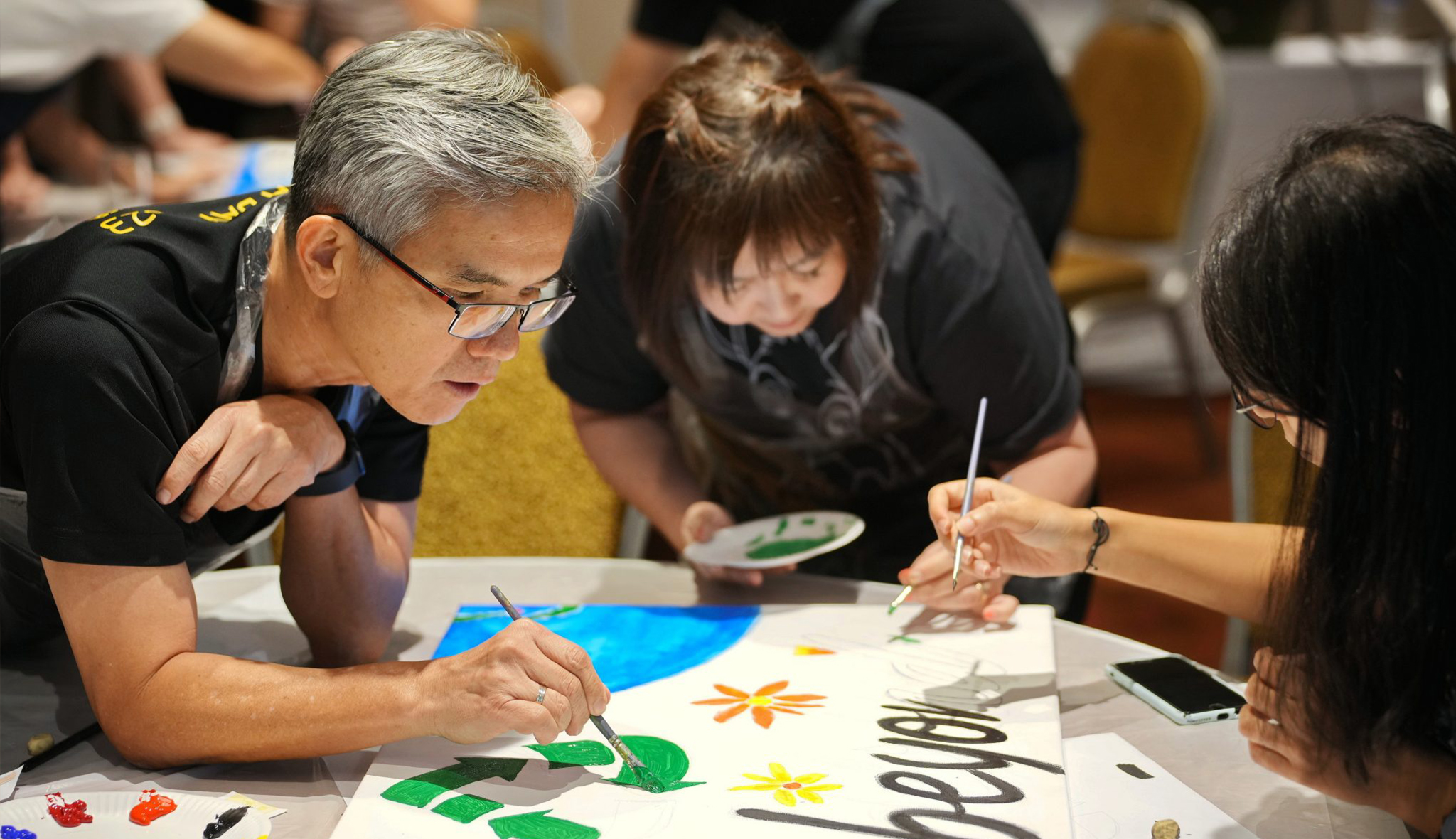
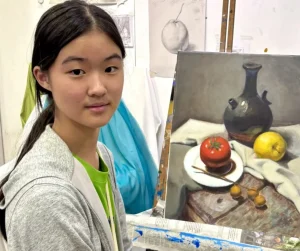






















Yeo Hoe Koon
Oil on Canvas
64 x 89.5 cm
Price Range: $16,000 - $20,000

Yeo Hoe Koon
Oil on Canvas
101 x 123 cm
Price Range: $26,000 - $32,000

Chen Wen Hsi
Chinese Ink and Color on Paper
50 x 54cm
Price Range: SGD $42,000 - $50,000

Cheong Soo Pieng
Red Tone
61 x 91.5cm
Price Range: SGD $108,000 - $138,000

Cheong Soo Pieng
Abstract Landscape
50 x 61cm
Price Range: SGD $95,000 -$128,000
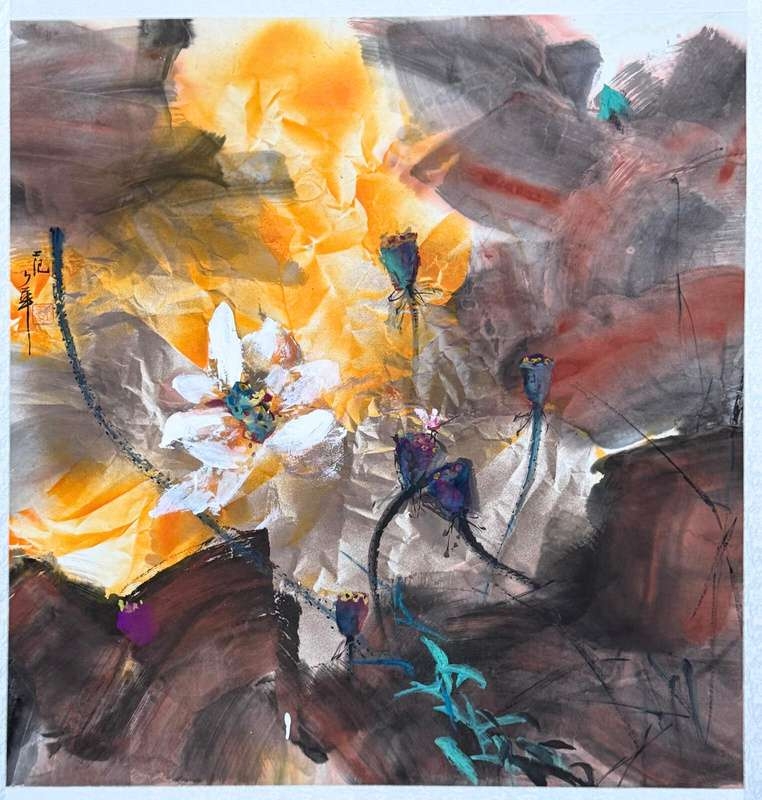
Fan Shao Hua
Chinese Ink and Colour on Paper
100 x 100cm
Price Range: SGD $9,800 - $14,800
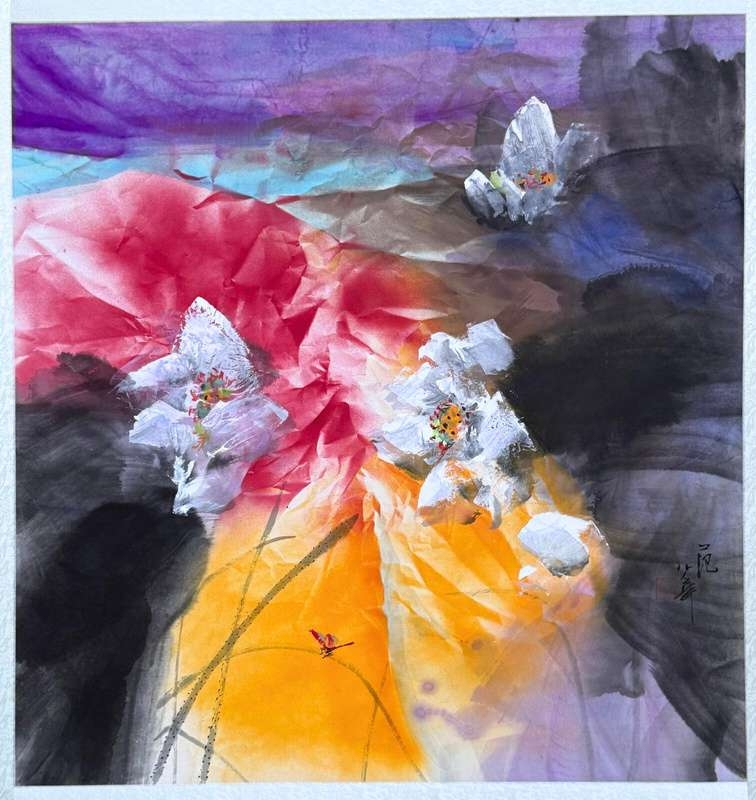
Fan Shao Hua
Chinese Ink and Colour on Paper
100 x 100cm
Price Range: SGD $8,800 - $13,800


Born in Fujian Province in 1911, Liu Kang spent his early years in British Malaya and studied art in Shanghai and Paris. He is one of the pioneer artists in Singapore who influenced the future generation of artists not only through his works but also through his leadership in the Singapore Art Society and Association of Chinese Artists of Singapore. In 1970, the Singapore Government awarded Liu with the Public Service Star and in 1996 he was honoured with the Meritorious Service Medal.
He is well-known for his Balinese-themed figurative paintings and calligraphy. In May 2003, he gave the majority of his works to the Singapore Art Museum.
Liu was inspired by and often appropriated the styles of French-based modernist painters and Asian styles of art. Both these influences can be also seen in the Nanyang Style which Liu Kang developed together with fellow Singaporean artists. The Nanyang Style uses Chinese ink or oil on canvas and emerged during post-WWII where there was a need for a strong Southeast Asian identity. This style is unique to Southeast Asia and is now an art style associated with the Nanyang Academy of Fine Arts.



刘抗(1911-2004),是世界艺术大师刘海粟的得意门生,1937年移居马来西亚。1942年定居新加坡。先后担任过上海美术专科学校西洋画专任教授,全国第二届美展评审委员,新加坡中华美术研究会会长,新加坡艺术协会会长,新加坡国庆美术展工作委员会主席,新加坡文化部美术咨询委员会主席,开创了“南洋画”派,是新加坡画坛泰斗、大宗师,作品为50多个国家画院、美术馆、博物馆、大学和几十位国家元首个人收藏,荣获第三届亚细安文化艺术创作奖,新加坡共和国服务星章,新加坡卓越功绩服务勋章,法国国家文学艺术军官服务星章。


刘抗曾说“在南洋有很多值得我们去描绘的地方,特别是那些岛国自然风光很美,它的人物,人文的活动水准很高,所以它的建筑,它的舞蹈,它的音乐都有它特殊的情绪。特别富有南洋的情绪。所以我们1955年就搬到巴厘岛去实地写生。 ”
在1952年,刘抗与三位画家陈文希、钟泗滨、陈宗瑞结伴到印尼峇厘岛旅游写生创作到巴厘岛去写生,创作出大批具有浓郁南洋特色的作品。作品在英国展出后,引起极大的轰动,人们被画中洋溢的热情奔放的情绪所震惊,称他们为南洋风格的创始者。
刘抗所创作的南洋作品在手法上有一点半原始的味道。他希望保持人类原有的一种气息,建立原创的南洋艺术,不要受国际文明的影响太多。
亚答木屋、印度舞蹈、回教教堂、巴厘岛风情尽收画家笔下,刘抗以跨文化的视野,不但从中国的传统艺术、西方现代艺术,而且也从南洋多民族文化艺术中汲取营养。多元文化培育了刘抗独特的绘画风格。随着刘抗“南洋画派”的确立,他在新加坡以及国际文化界赢得了巨大的声誉。为表彰刘抗对新加坡文化事业的贡献,新加坡总统两次授予他卓越贡献服务奖章。
晚年的刘抗仍孜孜不倦于习画与作画之间,他还经常赴世界各地举办画展和学术交流,在中国、欧洲、东南亚之间架设起了艺术沟通和融合的桥梁。
刘抗在逝世于2004年6月1日 。他当时享年94岁。
刘抗一生勤于做画,然而却很少卖画。在他即将离去的时候,他把自己最得意的一千件作品捐献给了新加坡美术馆。然而他留下的不仅仅是他的作品,一直从事教育事业的他,毫无保留的把自己的绘画经验与他的学生分享,如今他培养的年轻画家已经遍布世界各国。
Liu received his art education from the best of both hemispheres. Translated these influences and incorporated local Southeast Asian flavours into his work to create the distinct Nanyang style. Attributed to Singapore’s pioneer artists – Chen Wen Hsi, Chen Chong Swee, Cheong Soo Pieng and Liu Kang, the Nanyang style of art first emerged after the four pioneer artists’ return from a study-cum-painting trip in Bali in 1952.
Some of his well-known paintings from this era include: “Artist and Model” (1954), “Batik Workers” (1954) and “Balinese Girl in Red Sarong” (undated).
Liu Kang is a prolific artist and painter. His oeuvre of works is extensive and includes oil painting, pastel, Chinese ink painting, and calligraphy. Over Liu’s lifetime, he had been exhibited in Singapore and overseas including France, Hong Kong, Macau, Taiwan and the United States.
Timeline of Liu Kang’s Life:
1917–1926: His childhood years were spent in Muar, Malaya.
1926–1928: He enrolled in the Xinhua Art Academy, Shanghai, China.
1928–1933: His continued his art studies at the Académie de la Grande Chaumière in Paris.
1933–1937: He became a professor of western painting at Shanghai College of Fine Arts.
1937: Weds Chen Jen Pen in Shanghai.
1937–1945: The couple moved to Muar when the Japanese invaded Shanghai. The couple then arrived in Singapore, where Liu teaches art at Nan Chiao Teachers’ Trainnig College Singapore and Chung Cheng High School. Japanese forces attacked Singapore. Thus they returned to Muar, where Liu opened a coffeeshop with his brother. They go back to Singapore to escape Japanese persecution
1946: He released his multivolume illustrated work, Chop Suey, on the atrocities during the Japanese Occupation.
1957: He held his first solo exhibition in Singapore.
1968: He became the founding member of the Singapore Art Society and became its president for 10 consecutive years.
1981: One of his largest local exhibition, Liu Kang Retrospective, was held at the National Museum Singapore. Over 200 artworks were displayed
1983: Liu Kang Exhibition Tour in Taipei, Kaohsiung, Taichung and Tainan in Taiwan.
1989: Paintings by Liu Kang exhibition was held at the National Museum Art Gallery
1997: Liu Kang at 87 exhibition was held at the Singapore Art Museum.
1998: Liu Kang at 88 exhibition was held at the Singapore Soka Association where 72 works of his family members were included.
2000: His first solo exhibition in Beijing, China
2003: Liu Kang donated all his works to the Singapore Art Museum. Over 1000 works were donated.
2004: Liu Kang passes away of natural causes.






Outdoor Painting (In Johore)
Oil on canvas
85.5 cm x 127.2 cm
National Gallery Art Collection

Offerings
Oil on canvas
1215 cm x 1540 cm
Liu Kang Family Collection at Singapore Art Museum
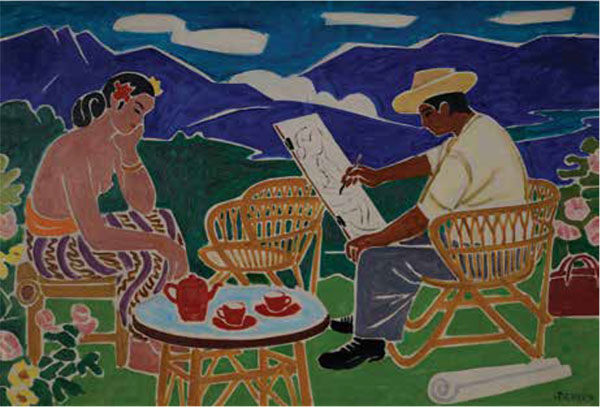
Artist and Model
Oil on canvas
1240 cm x 840 cm
National Heritage Board Art Collection
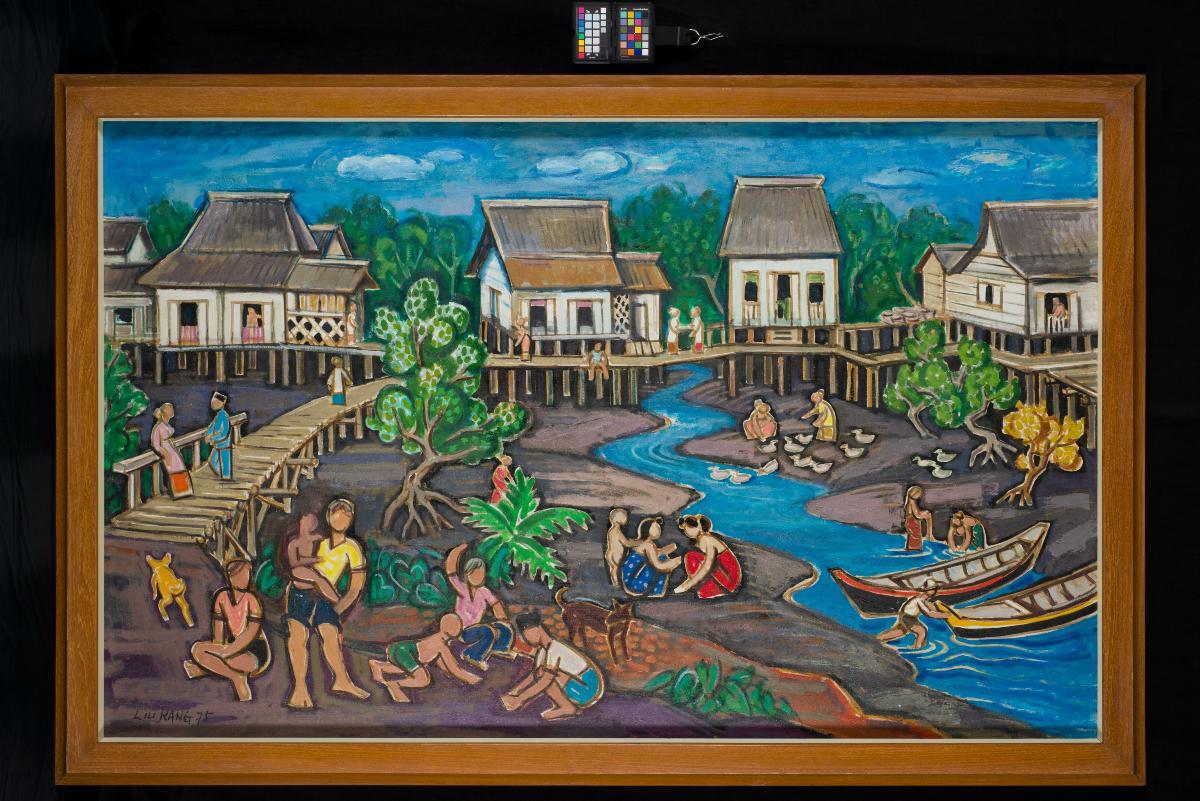
Life by the River
Oil on canvas
126 cm x 203 cm
National Gallery Art Collection
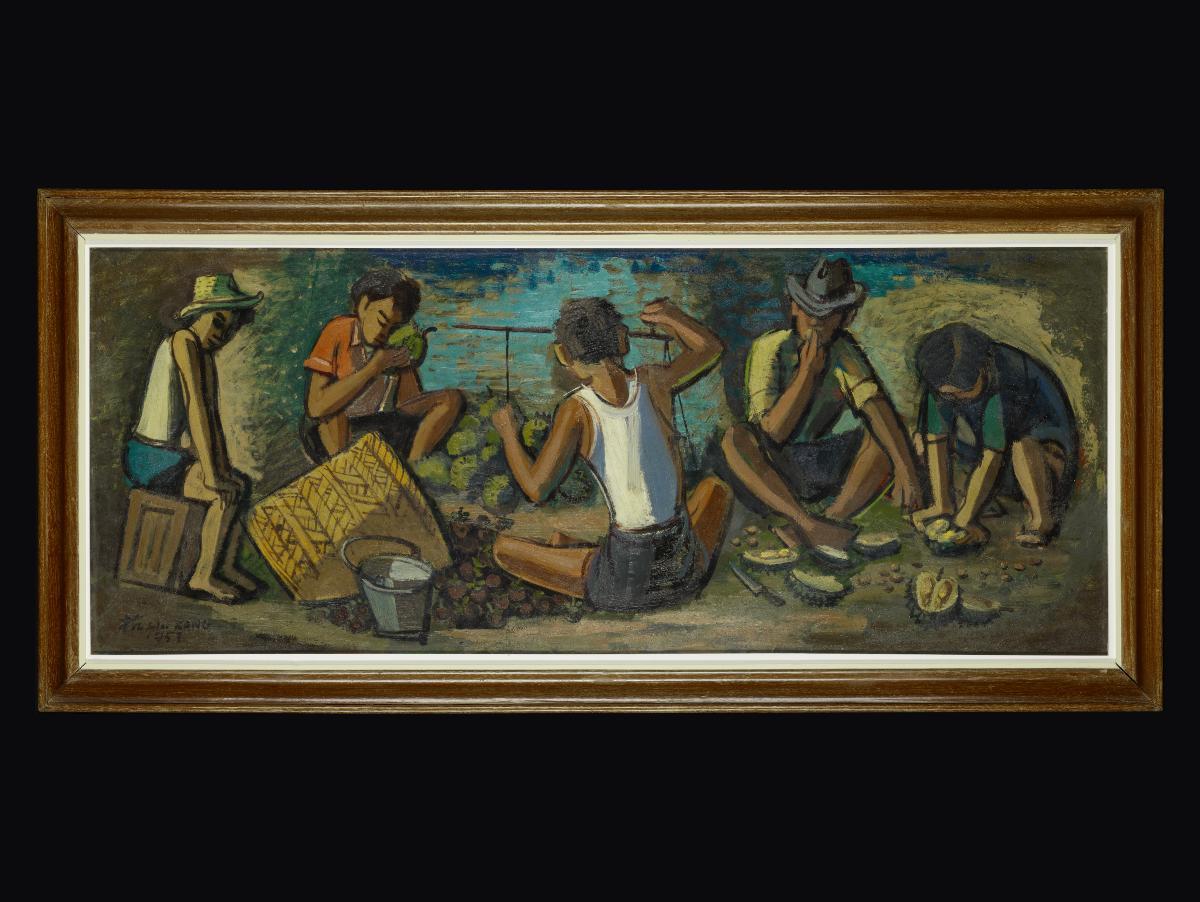
Durian Vendor
Oil on canvas
47.5 cm x 118.5 cm
National Gallery Art Collection
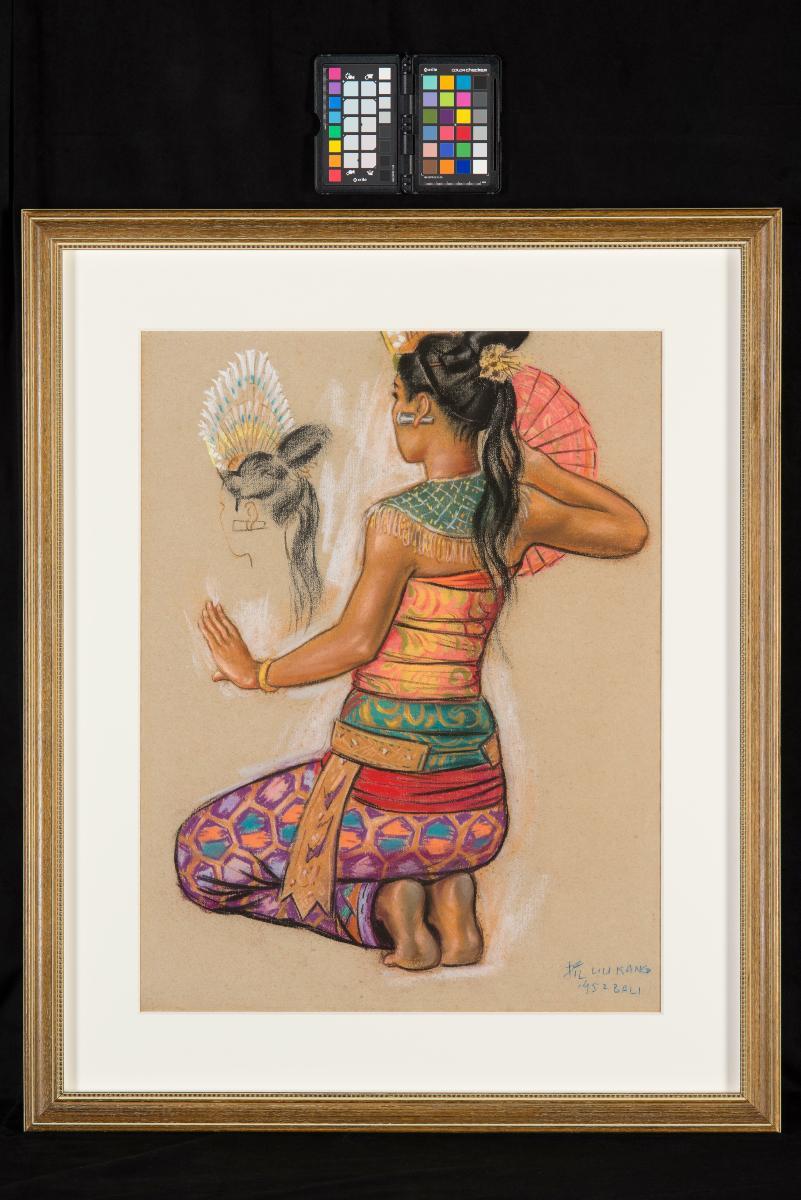
Souri
Oil on canvas
894 cm x 1391 cm x 65 cm
Liu Kang Family Collection at Singapore Art Museum
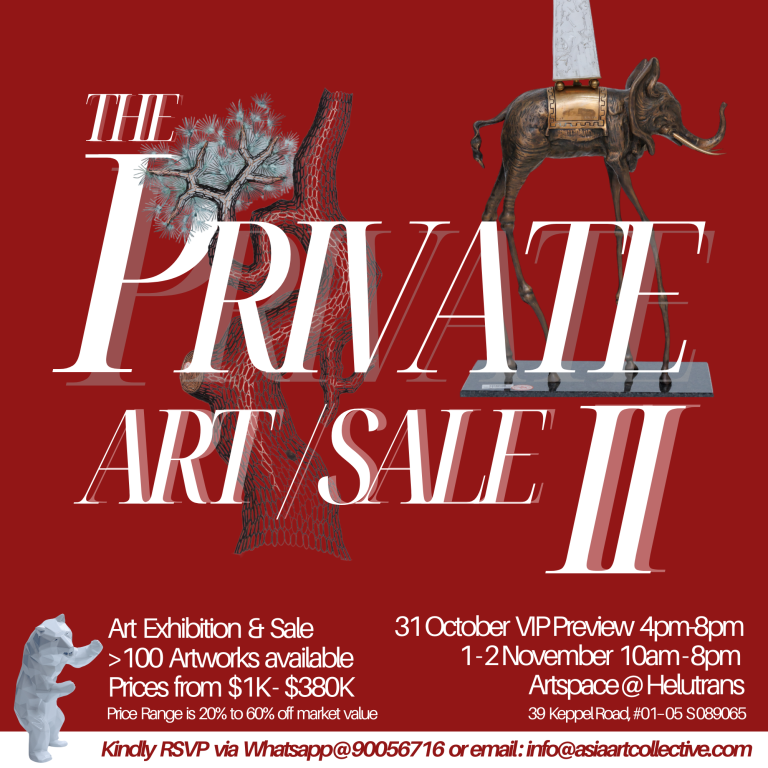
From 31 October to 2 November 2025, collectors and art enthusiasts will have an exclusive opportunity to experience Yeo Hoe Koon’s legacy at The Private Art Sale 2:
📍 Location: Artspace @ Helutrans, 39 Keppel Road, #01-05, Singapore
📅 Dates: 31 October 4pm-8pm (VIP Preview) | 1-2 November 10am-8pm (Public Viewing)
⏰ Time: 11:00am – 8:00pm daily
This highly anticipated event will present more than 100 carefully curated artworks offered at 20%–80% below current market prices, providing collectors with a rare chance to obtain meaningful pieces of Singapore’s art history while engaging deeply with the artist’s legacy.
About us – Asia Art Collective
For years, Asia Arts Collective is an advisory and consultancy specialised in Singapore and Asian Modern and Contemporary Art. Professional art services include providing clients with art advice on Mo Ni’s artwork purchase and sales, Mo Ni’s artwork valuation and assessment, art acquisition and collection planning, Mo Ni’s artworks sale and brokerage, as well as art commissioning and artwork sourcing. Asia Art Collective seeks to promote a culture of art appreciation and Mo Ni’s artworks acquisition and collection for Singapore art, modern and contemporary Asian art through its diverse and rotating art exhibitions and art appreciation programmes, courses and talks. Enquire with Asia Art Collective for advice and support and on your art-collecting journey.
Contact curator for artwork consultancy & viewing of Mo Ni’s artworks:
WhatsApp& Call : 62550711 (Office) & 67332155 (Office), 90056716 (Iola Liu), 92398226 (Iola Liu)
Email: info@asiaartcollective.com
Have any questions? Please drop us an enquiry form and we’ll respond to you as soon as we can!
Click and get to our WhatsApp
Embark on a captivating journey into the vibrant world of digital art! Our Foundation in Digital Art workshop invites budding creatives aged nine and above to unleash their imagination and hone their artistic skills in a dynamic, supportive environment. From mastering basic digital tools to crafting mesmerizing digital masterpieces, children will explore a spectrum of techniques guided by seasoned mentors. Through hands-on activities and interactive sessions, participants will discover the endless possibilities of digital expression while fostering creativity and critical thinking. Join us for an exhilarating adventure where young artists transform ideas into stunning visual realities, igniting a passion for digital art
In the Batik Introduction Handkerchief Painting workshop, participants will learn the traditional art of batik, a wax-resist dyeing technique originating from Indonesia. The workshop begins with a brief history and overview of batik, highlighting its cultural significance and various techniques. Participants will then observe a demonstration of applying wax with tjanting tools and dyeing the fabric. Following the demonstration, each participant will design and create their own batik handkerchief, applying wax to create patterns and then dyeing their fabric. The workshop concludes with a group discussion, allowing participants to share their creations and reflect on their learning experience.